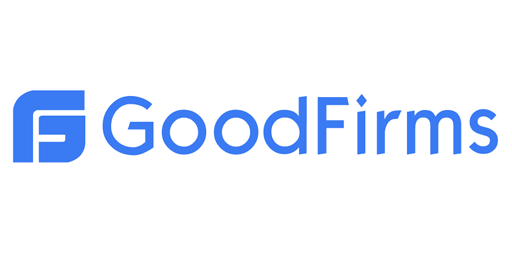Top 10 Mobile App Development Frameworks in 2023

Mobile development is making software for mobile devices like smartphones and tablets. Developers create these applications, commonly known as mobile apps, to provide users with various functionalities and services. Mobile development involves several stages, including planning, designing, coding, testing, and deploying the application to mobile platforms.
The mobile app market made $149.70 billion in 2022 and is expected to make $218.80 billion by 2027. The increasing numbers and projections clearly display the demand for mobile app developments. To meet this demand, it’s important to select mobile app developer tools that deliver fast results within budget.
Benefits of Mobile App Development Software
Mobile app development software makes creating mobile apps easier, faster, and more user-friendly. Here are some of the key benefits:
- Streamlined Development Process: Mobile app development software has IDEs with tools, frameworks, and libraries for coding, designing, and testing mobile apps. These tools can significantly speed up the development process by providing pre-built components and templates.
- Code Reusability: Many mobile app development platforms support cross-platform development, allowing developers to write code once and deploy it on multiple platforms. This reduces the need to write separate code for different operating systems, saving time and effort.
- Visual Interface Design: Mobile app development software often includes visual design tools that allow developers to create user interfaces through drag-and-drop interfaces. This is especially useful for designers and developers who may not have extensive coding experience.
- Access to Libraries and Frameworks: These software platforms provide access to various libraries, frameworks, and plugins that can enhance the functionality of the app. Developers can leverage these resources to incorporate features like social media integration, location services, and more.
- Simplified Testing: Development software often includes testing features, allowing developers to test apps on different devices and screen sizes. This helps identify issues early in the development process.
- Faster Prototyping: Mobile app development software enables fast creation of functional prototypes for app user interface and interactions. This is particularly useful for getting user feedback and making design decisions.
- Real-time Collaboration: Some platforms offer collaboration features that allow multiple team members to work on the same project simultaneously. This is beneficial for distributed teams or for involving designers, developers, and testers in the development process.
- Reduced Learning Curve: Newbie app developers can find helpful documentation, tutorials, and resources on these platforms to learn mobile app development more efficiently.
Let’s take a look at the top 10 mobile application development platforms in 2023.
React Native
React Native, developed and maintained by Facebook, is a cross-platform application development framework renowned for its accessibility. It has rapidly gained prominence as the favored choice among developers. This framework expedites the creation of mobile applications for both Android and iOS platforms. Eminent enterprises such as Tesla, Airbnb, Skype, and Amazon Prime showcase noteworthy illustrations of React Native applications.
React Native is a top mobile app framework that helps build different versions of features for specific platforms. This distinctive capability facilitates streamlined utilization of a unified codebase across diverse platforms.
Features of React Native:
- Compatibility for third-party plugins
- Support iOS and Android
- Low coding required
Flutter
Flutter is an open-source UI software development toolkit created by Google. You can use it to build natively compiled applications for mobile, web, and desktop from a single codebase. Flutter allows developers to create visually appealing and high-performance applications with a consistent user interface across different platforms.
The framework provides a wide range of pre-designed widgets that help in building user interfaces efficiently. Flutter’s “hot reload” functionality allows developers to view code modifications in real time without having to reboot the app. This accelerates the development process and enhances productivity.
Sencha Ext JS
Sencha Ext JS is a JavaScript framework for building web applications with a rich and interactive user interface. It helps create advanced web apps with many features. It does this by offering UI components, data handling tools, and mechanisms for complex, data-heavy applications.
Key Features of Sencha Ext Js:
- Rich UI Components
- Data Handling
- Cross Browser Compatibility
JQuery Mobile
jQuery Mobile is a web framework for making mobile-friendly web apps using HTML, CSS, and JavaScript. It uses jQuery and makes it easier to create mobile web apps that work on different devices and screen sizes.
Key features of jQuery Mobile include:
- Touch-Optimized UI Components
- Responsive Design
- Theme Framework
- Ajax Navigation
Native Scripts
NativeScript is an open-source framework for building native mobile applications using SWIFT, Kotlin, Java, and Angular, as well as Vue.js. Like React Native, NativeScript lets developers build mobile apps for iOS and Android using one codebase.
Key features of NativeScript include:
- Application in different platforms
- Backend support
- Direct access to iOS and Android APIs
Framework7
Framework7 is an open-source mobile framework for building hybrid mobile and web applications. It helps developers make mobile apps that look and feel like native apps. It has tools and UI components for creating modern, responsive, and feature-rich apps. Framework7 primarily focuses on creating iOS and Android-style user interfaces.
Key features of Framework7 include:
- Responsive Layouts
- Animations & Transitions
- Offline Support
Ionic
Ionic is a free framework for creating mobile and web apps using HTML, CSS, and JavaScript. It offers tools, UI parts, and services to aid developers in making apps that work on iOS, Android, and the web. These frameworks help native mobile app development experts integrate UI elements to strengthen the app design.
Key features of Ionic include:
- Themes and Customization
- Development servers offering live reloading
- Cross-platform Development
Xamarin
Xamarin is an application framework owned by Microsoft. Developers use C# and .NET to create mobile apps that work on different platforms. With Xamarin, developers can create native mobile apps for iOS, Android, and other platforms using a single codebase. Xamarin offers tools and libraries to simplify development and enable code sharing across platforms.
Key features of Xamarin include:
- Supportive community and a variety of learning resources
- Build truly native apps
- Versatile backend infrastructure
Onsen UI
Onsen UI is an open-source HTML5 framework for building hybrid mobile and web applications. It provides pre-made UI elements and tools for developers. These help in creating mobile apps that have a visually appealing design and are compatible with both iOS and Android platforms.
Key features of Onsen UI include:
- Easy to learn
- Cost-effective development
- Smooth user experience
Apache Cordova
Apache Cordova, also known as Cordova, is a free framework for making mobile apps. It lets developers use web technologies like HTML, CSS, and JavaScript to create mobile applications. Cordova enables developers to build hybrid mobile apps that can run on various platforms, including iOS, Android, Windows, and more. Cordova is for web developers who want to make mobile apps with access to device features.
Key features of Apache Cordova include:
- Third-party app management
- Streamlined development structure


